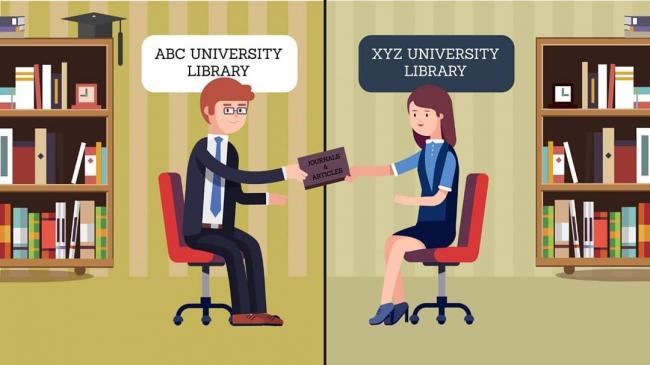
Through the River Campus Libraries, University students and faculty have access to more than 3.5 million volumes. In a world that is not being held hostage by a novel coronavirus, Interlibrary Loan (ILL) connects them to an almost unlimited number of additional volumes and resources.
But we are being held captive. Nevertheless, ILL persists.
In case you’re unfamiliar with ILL, here’s a quick overview.
ILL is…
Essentially a massive, global network of libraries working together to ensure teaching, learning, and research needs around the world are met. It’s a free service provided to Rochester’s students, faculty, and staff, as well as those at Colgate Rochester Divinity School and St. Bernard’s School of Theology and Ministry.
Users can request…
Just about anything—articles, books, book chapters, DVDs, patents, dissertations, and more.
Materials are delivered…
As quickly as possible. Wait times depend on the number of institutions carrying the items, their willingness to lend them, and where those institutions are located.
ILL’s success rate is…
Pretty high. There are two main reasons a request is not completed. The first occurs when the staff has tried everything and come up empty, which usually only happens when the item is incredibly obscure. The other instance is when the request happens to be a course reserve item.
Now, back to ILL’s pandemic perseverance.
For safety reasons, ILL currently cannot meet requests for physical items. However, nothing has stopped staff from fulfilling digital requests, which have included full-text electronic theses and items from the special collections of other libraries. Elizabeth Andre, section supervisor for ILL, explains that the service has continued to be successful because many libraries are in the same position as Rochester.
“We’re still here,” says Andre. “We’re still working remotely to get students and the faculty what they need. Before [the pandemic], it was more often that we were lending and scanning print materials. Now, libraries are having to work together to give access to their electronic resources.”
The first collaborative move Rochester made was to suspend all fees for requests by other libraries (usually $8). Another way the University is working with other libraries is the way it “talks” to them through their software, ILLiad. Rochester has set its loan request time period to 20 days (the maximum), which is being used to communicate an inability to access the physical collections. Other libraries have followed suit, making it clear who can lend physical items and who cannot.
More impressive—and important—than the library staff’s deftness in overcoming pandemic-created restraints is their ability to satisfy patrons. Mimi Cheng, a PhD candidate in the visual and cultural studies program, has been conducting research remotely for her dissertation, and she hasn’t lost a step.
“I have an ongoing list of needs for ebooks, PDFs, and research databases,” says Cheng. “ILL has been amazing in helping me locate obscure materials. Emma Schell, who processes a lot of my requests, is an absolute star!”
Cheng believes that in the past five years, she’s put in a little more than 100 requests. During that time, she has been continually blown away by how quickly and efficiently she’s received access to research she needs.
Libraries around the world are having to problem-solve to get patrons what they need. Workarounds, such as ILLiad-based communication, have made this easier. However, at Rochester, it’s the Emma Schells and Elizabeth Andres, who will continue to preserve accessibility to resources at the highest level, in best and worst of times.
For more information or questions about Interlibrary Loan, contact Elizabeth Andre at eandre@library.rochester.edu. Enjoy reading about the University of Rochester Libraries? Subscribe to Tower Talk.

